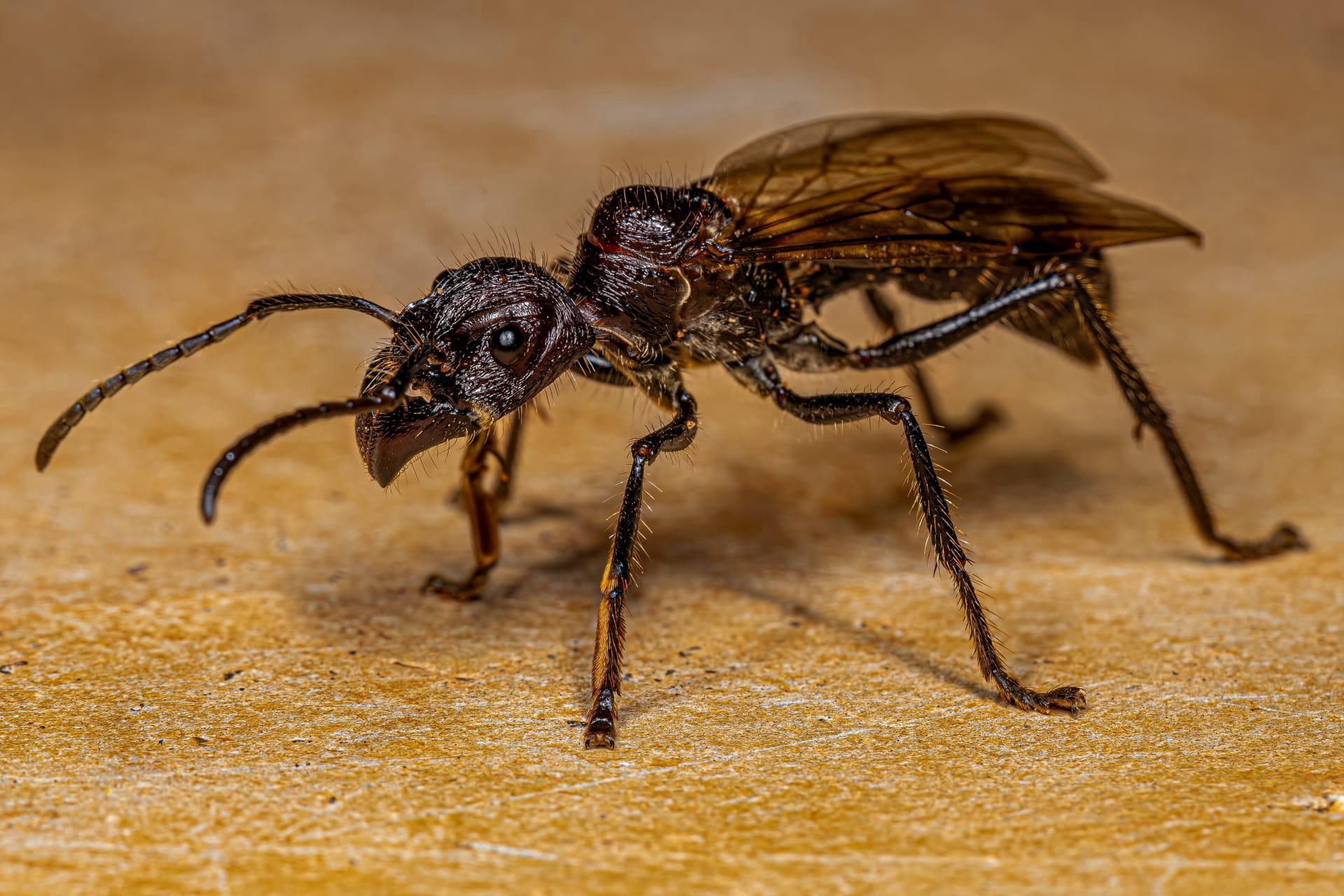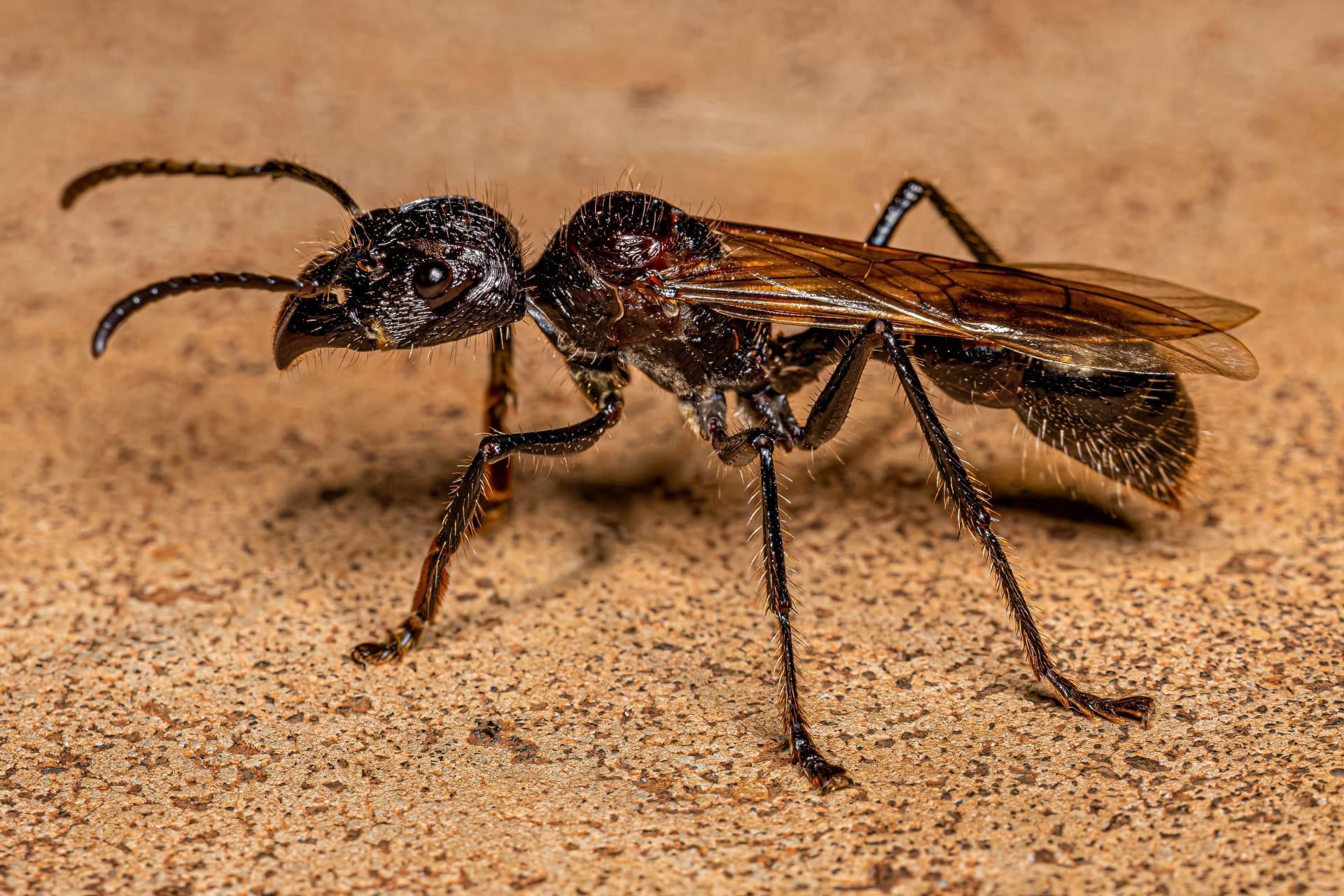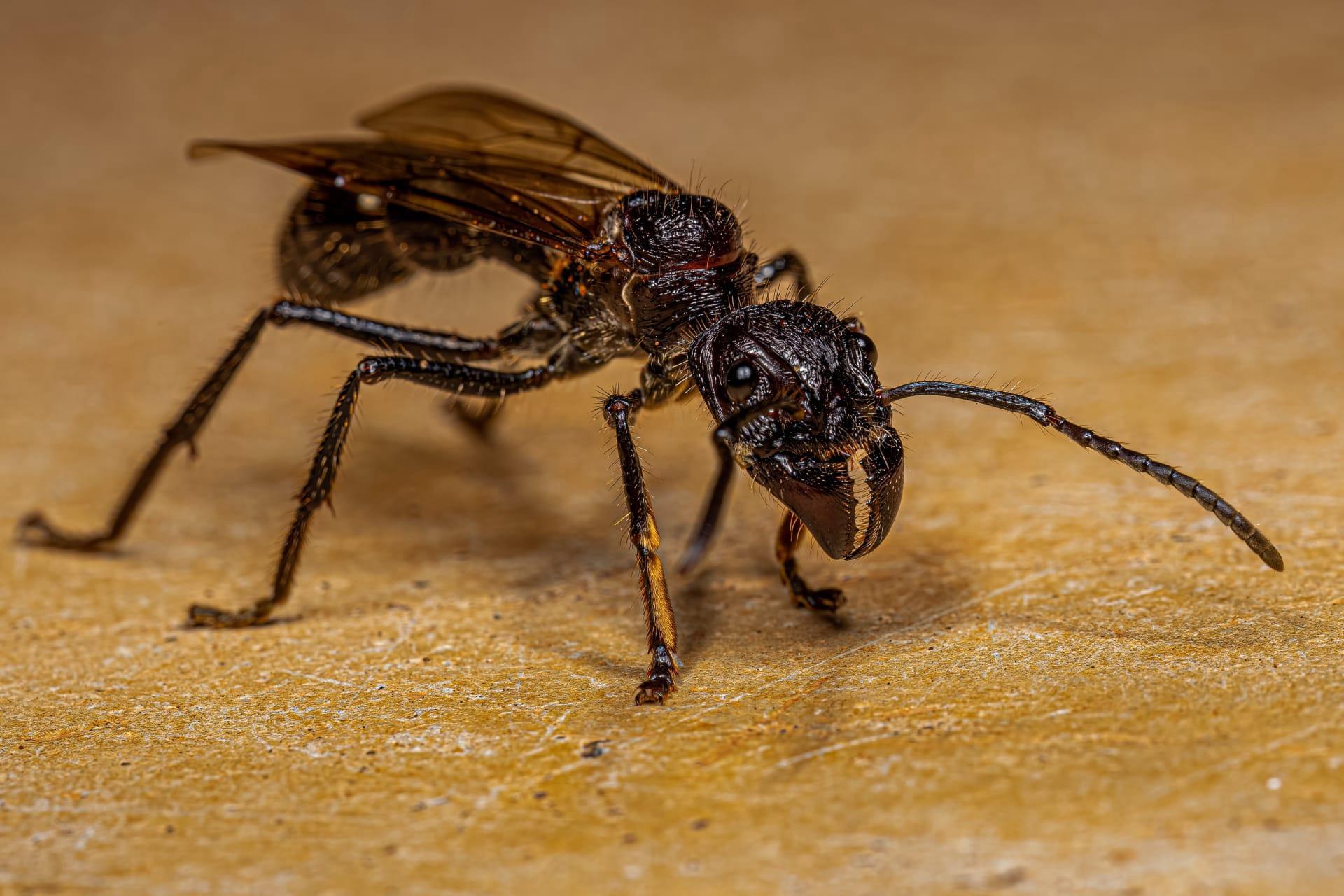1
The Bullet Ant, known scientifically as Paraponera clavata, boasts the most painful sting of any insect, according to the Schmidt Pain Index. This scale, developed by entomologist Justin Schmidt, rates the sting on a scale of 0 to 4. The Bullet Ant scores a staggering 4+, which is so intense that it's compared to being shot, hence the name "Bullet Ant". The pain from a single sting can last for over 24 hours, featuring a throbbing, unabating agony that is both shocking and debilitating.
Remarkably, Bullet Ants can reach up to 1.2 inches (3 cm) in length, making them among the largest ants in the world. Their size, combined with their distinctive black coloration and elongated mandibles, make them easily recognizable in their native habitats. These ants are predominantly found in the humid lowland rainforests of Nicaragua, Paraguay, and Honduras. Their large colonies, often housing hundreds of ants, are typically located at the base of trees, where they play a crucial role in the ecosystem by controlling pest populations.

2
Bullet Ants exhibit a unique behavior known as "tandem running." In this process, a knowledgeable forager ant leads a naive worker to a food source, laying down a chemical trail as they move. This tandem running is not just about finding food; it's a sophisticated form of social teaching, where the experienced ant effectively 'teaches' the route to its follower. This behavior is rare among insects and highlights the Bullet Ant's advanced level of social organization and communication.
Another fascinating aspect of Bullet Ants is their role in the initiation rites of the Satere-Mawe tribe in the Amazon. Young men seeking to prove their manhood must endure wearing gloves filled with these ants for 10 minutes. The ritual is excruciating, as the ants repeatedly sting, and the pain can last for days. This rite of passage is not only a test of endurance but also a significant cultural tradition that underscores the respect and awe the tribe holds for the natural world, particularly for the Bullet Ant.

3
Contrary to their fierce reputation, Bullet Ants are predominantly insectivores and nectar feeders. Their diet mainly consists of small insects, which they hunt using their strong mandibles and potent venom. This diet plays a crucial role in controlling the population of other insects in their habitat. Additionally, their affinity for nectar makes them important pollinators, contributing to the health and diversity of the tropical rainforests they inhabit.
Bullet Ants have a sophisticated hierarchy within their colonies. The queen, the largest ant in the colony, is solely responsible for laying eggs. Worker ants, which are all female, perform various tasks based on their age. Younger workers tend to the queen and larvae inside the nest, while older workers venture outside to forage and defend the colony. This division of labor is a key factor in the colony's survival, ensuring efficiency and organization in their daily activities.

4
The venom of the Bullet Ant contains poneratoxin, a potent neurotoxic peptide. This venom affects the nervous system, causing intense pain and, in some cases, temporary paralysis in the affected area. Interestingly, this venom has been a subject of medical research, as scientists explore its potential for developing new painkillers. The idea is that understanding how poneratoxin causes pain might lead to insights into how to block pain more effectively in humans.
Despite their fearsome sting, Bullet Ants are not aggressive by nature. They typically sting humans only when provoked or when their nests are disturbed. Their primary use of venom is for hunting and colony defense. This behavior is a stark contrast to their painful sting's reputation, emphasizing that these ants are more than just a painful nuisance, but rather an important part of their ecosystem with complex behaviors and social structures.

5
Bullet Ant colonies are known for their intricate nest-building skills. They construct large, underground nests that can extend several feet below the surface. These nests are designed with multiple chambers and tunnels, providing space for the queen, larvae, and food storage. The construction of these nests is a testament to the ants' engineering skills and their ability to work collectively to create complex structures.
In some indigenous cultures, the Bullet Ant is revered and feared. Apart from the Satere-Mawe tribe's initiation ritual, other tribes use the ant in traditional medicine. They believe the ant's venom has healing properties, especially for rheumatism and muscle pains. While there is no scientific evidence to support these claims, this practice highlights the Bullet Ant's significant role in the cultural and spiritual lives of these communities, illustrating the deep connections between humans and the natural world.